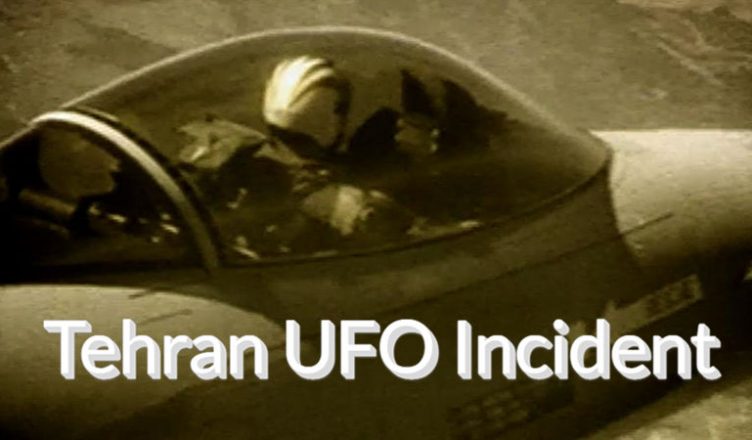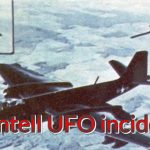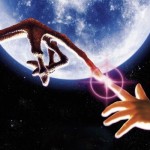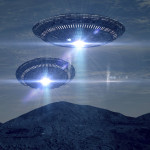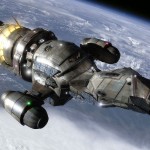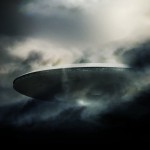In the annals of aviation history, there exists an intriguing and enigmatic chapter— the 1976 Tehran UFO incident. Occurring in the twilight of the Imperial Iranian Air Force’s era, this event unfolded with a series of perplexing encounters involving two F-4 Phantom fighter jets. Amid the skies over Tehran, the ordinary course of a routine mission transformed into a perplexing saga, defying conventional explanation. As the narratives from the flight crew and ground control emerged, so too did a mysterious and luminous presence that captivated the attention of witnesses and baffled seasoned pilots. The incident’s resonance extended beyond its immediate timeframe, leaving an indelible mark on the records of unidentified aerial phenomena. Let us delve into the intricate details of this otherworldly encounter that transpired in the autumn of 1976, inviting speculation, scrutiny, and a sense of wonder that continues to linger in the corridors of aviation history.
1976 Tehran UFO Incident:
In the early hours of September 19, 1976, at least four civilians reported a bright object in the skies over Tehran. Around 12:30 local time, the Iranian Air Force Command in Tehran received four phone calls from residents of the Shemiran district, reporting unusual activities in the night sky. Some callers described a bird-like object, while others mentioned a glowing helicopter.
When it was confirmed that there were no helicopters in the air, the regional Air Force commander, General Yousefi, was summoned. Initially, he thought the observed brilliance was ordinary starlight. However, after meeting with the control tower at Mehrabad International Airport and personally observing an exceptionally bright object larger than any visible star on Earth, he decided to dispatch an F-4 Phantom II interceptor from Shahrokhi Airbase, located 282 kilometers (175 miles) west of Tehran.
Major Parviz Jafari, the commander of the IIAF squadron, and Lieutenant Jalal Damirian, the weapons officer, were assigned to intercept the object in a second F-4 Phantom II. At 01:30, a jet piloted by Captain Mohammad Reza Azizkhani took off and headed approximately 64 kilometers north of Tehran. The object was extremely bright, visible up to 112 kilometers. When the aircraft approached within about 40 kilometers of the object, all equipment shut down, communication was lost, forcing Azizkhani to change course and return to base. On the return journey, all systems functioned normally.
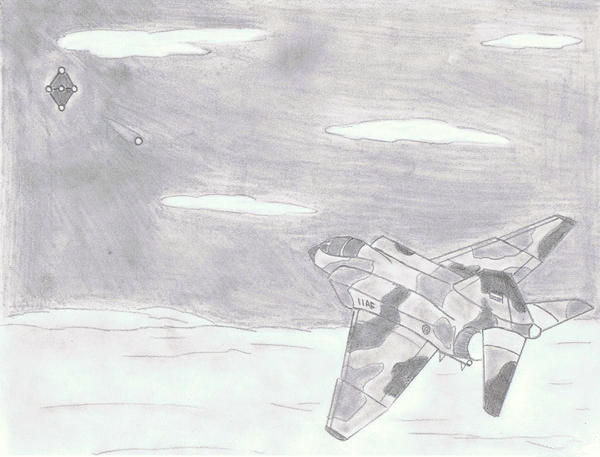
Jafari locked onto an object within a range of 27 nautical miles (approximately 50 kilometers) on radar, comparable in size to a Boeing KC-135 Stratotanker. As he approached the object, Jafari described it as “flashing intense red, green, orange, and blue lights so bright that I couldn’t see its body,” and his aircraft’s communication system was disabled. When he attempted to launch an AIM-9 Sidewinder infrared-guided missile, his equipment shut down until his jet moved away from the object, at which point it returned to normal.
At 01:40, a second F-4, under the control of Lieutenant Parviz Jafari, took off. Jafari, who had retired as a general, later engaged in researching unidentified flying object phenomena worldwide. Jafari detected an object on his aircraft’s radar at a distance of 43 kilometers. On the radar, the object appeared to resemble a Boeing 747. When the object was 40 kilometers away, it began to move, maintaining a constant distance from the F-4, flying at a speed of 150 miles per hour (225 kilometers per hour). The brightness of the object made it impossible to determine its size. The light emitted by the UFO alternated between blue, green, red, and orange. The lights flashed intermittently but at an extremely high speed, giving the impression of simultaneous combustion.
As the object and the F-4 flew south, a smaller second object separated from the first and rapidly approached the F-4. Lieutenant Jafari, thinking he was under attack, attempted to launch a Sidewinder missile, but all equipment, including weapon systems and communication, suddenly shut down. Attempts to restart them were unsuccessful. The object flew beneath him, covering a distance of four to five kilometers in a very short time, then returned to the first object.
When the F-4 turned around, all equipment resumed working. The aircraft’s crew saw another glowing object separate from the first and rapidly descend toward the ground. They anticipated witnessing a collision and explosion but observed a soft landing. Subsequently, the F-4 circled the area at a lower altitude, marking the impact point of the glowing object. Jafari later stated that the object was so bright that the surrounding rocks were visible. The object landed near the Rey oil refinery, close to the Iranian border.
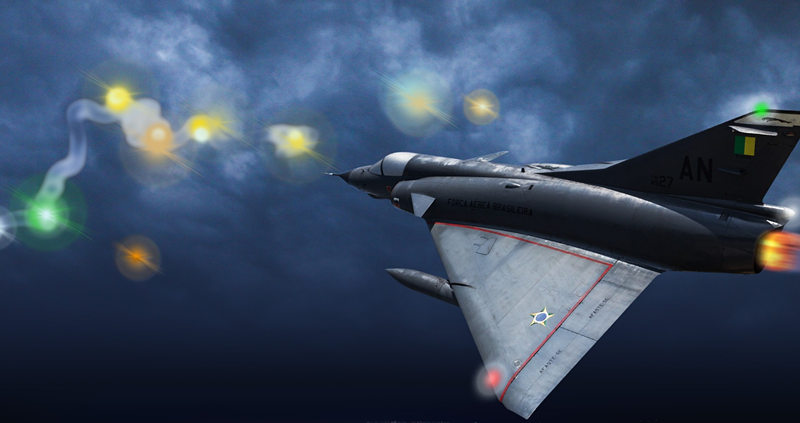
A civilian plane approaching Mehrabad also lost contact while flying over the same location. Like the F-4 crew, they observed another cylindrical object with a constant light at the end and intermittent flashing in the middle. As they approached, the object circled above the F-4. The Mehrabad control tower reported that there was nothing in the air, but tower personnel could see the object from the direction provided by Jafari. Years later, the chief controller and a general admitted that the object circled the tower and shut down all equipment there.
The next day, F-4 crew members flew by helicopter to the landing site of the smaller object. During daylight, no traces were found. They then hovered in the area, and to the west, they picked up a distinct “beeping” signal. The signal was loudest near a small house, so they landed and inquired about the unusual events of the previous night from the residents. They replied that they heard a loud noise and saw a lightning-like bright light.
Further investigation of the landing site, including radiation measurements, was apparently conducted, but the results were never published. These events occurred before the collapse of the Pahlavi dynasty (1979), and records in Tehran may no longer exist. A military spy satellite also recorded the situation: the U.S. satellite DSP-1 observed infrared anomalies during and within an hour after the events.
Interviews with Witnesses:
In 1994, during the production of the television program “Sightings,” numerous witnesses were interviewed regarding the events. Almost everyone referred to the object as a high-tech product of extraterrestrial intelligence.
One pilot, Yaddi Nazeri, suggested that the object moved at speeds of two to three thousand miles per hour. He stated, “…it surpassed all speeds and powers. Later, the F-4… still couldn’t intercept it. That’s when I saw it was a UFO.” Nazeri added, “…no other country has such flying objects, so I thought it came from another planet.”
The pilot of the second F-4, Parviz Jafari, mentioned that, after an unsuccessful attempt to launch a rocket, he feared for his life and attempted to eject, but the corresponding button did not work. In a press conference held on November 12, 2007, in Washington, Jafari added that the main object released four smaller objects, one of which flew toward the aircraft and returned to the main object. The second one Jafari attempted to attack, and another followed him. The last one emitted a bright light and fell into the desert. Both interceptor pilots, when questioned during the press conference, expressed their belief that they saw extraterrestrial objects.
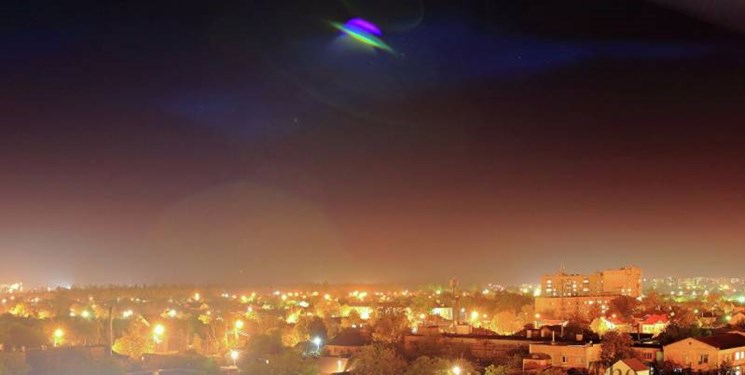
General Nader Yousefi stated that he ordered two interceptors to be sent. He testified, “Because of my experience on September 19, 1976, I believe there is something there. We don’t know what it is, and we don’t know where it comes from.”
Yousefi recalled many details mentioned in the reports but also added new ones. He said the second F-4 lost communication and weapon control capabilities while attempting to chase the UFO. Even at twice the speed of sound, the pilot couldn’t catch up with the object. The decision was made to return to Mehrabad Airport. According to Yousefi, as the aircraft approached the ground, he received a call from the control room, informing him that an unidentified flying object had been following him to the base.
Controller Hossein Pirouzi told “Sightings” that the pilot was in a panic because a massive unidentified flying object flew past him. According to Pirouzi and other controllers, the object flew over Mehrabad at an altitude of approximately 660-750 meters (2200-2500 feet). It was described as a cylindrical object, roughly the size of a regular bus, with a constant light at the end and intermittent flashing in the middle. During the UFO’s flight, the control room experienced a power outage, but the rest of the airport functioned normally. The unidentified flying object flew west, and after 25 minutes, it was spotted by an EgyptAir pilot over the Mediterranean, then over Lisbon by a KLM pilot, crew members, and passengers, who claimed the object was flying westward across the Atlantic.
The next day, Tehran initiated an investigation. Iranian Air Force Deputy Commander, Major General Abdollah Azarbarzin, interviewed all leaders and compiled a report. The pilot of the second F-4, General Jafari, confirmed, during the interviews, the presence of a U.S. colonel who was present during the interrogations and took notes.
Finally, controller Pirouzi recalled Azerbaijan’s perspective: “When they heard our reports and the reports from our pilots, they thought no country possessed such technology, and they believed this strange object came from outer space.”
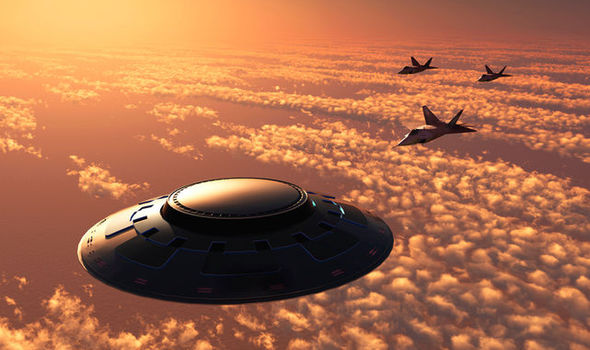
In an interview with “Sightings,” Azerbaijan confirmed Pirouzi’s statements. He mentioned that they believed these objects intentionally disrupted the electronic equipment of the aircraft and control room. Regarding the objects separated from the unidentified flying object, Azarbarzin said, “Pilots referred to them as fireballs, but we all thought they were very powerful electromagnetic waves capable of shutting down all electronic equipment: VHF, UHF, weapon control systems, radar, weapon communication, and so on – everything was shut down.”
Azerbaijan also stated that when the second F-4 emerged from an emergency dive, the co-pilot could clearly see the unidentified flying object from below. In interviews with “Sightings” and researcher Dr. Bruce Maccabee, the co-pilot described the object’s shape as round, like a plate or disc, with a domed or cockpit-like top resembling a hemisphere. It emitted orange or yellowish light, and the crew was not visible.
Considering all factors, given the extraordinary acceleration capabilities of the object, Azarbarzin concluded that the unidentified flying object surpassed all known military equipment.
This conclusion was reported to the private military advisor to the king, General Hatami, who then forwarded the report to the U.S. Military Assistance Advisory Group (MAAG) in Tehran. Therefore, the report reached the head of the Iranian MAAG, General Richard Secord. Azarbarzin did not specify whether Secord saw the report, but another senior Iranian Air Force officer, Mahmoud Sahabzadeh, told “Sightings” that he attended the meeting on the night of the incident and stated, “This UFO sighting is the first in history. It’s our Air Force.”
General Azarbarzin also informed Maccabee that all investigation materials had been handed over to the U.S. Air Force. However, the U.S. Air Force claimed that its only report on this incident was the testimony of the second F-4 pilot.
Key Testimonies:
On October 1, 1976, the Iranian newspaper published the statement of the second interceptor pilot, Lieutenant Parviz Jafari. The aircraft was flying supersonically towards Tehran. Jafari mentioned that upon noticing its approach, the unidentified flying object accelerated its speed. “From the Earth, it was about half the size of the moon. It emitted purple, orange, and white light, three times brighter than the moon.”
It was reported that Jafari, upon being ordered to return to the base if he couldn’t catch up with the target, ceased the pursuit. Upon his return, he informed the controller that the UFO had turned around and caught up with the pursuer, and he might be forced to land. “Something was chasing me from behind… I think it wanted to collide with me. It flew just below me, almost touching me…” The urgency in the pilot’s voice was clearly audible on the tape. The article also mentioned that the pilot described “a bright, circular object, 4.5 meters in circumference, separated from the unidentified flying object.” It was claimed that the authenticity of this object was confirmed by two F-4 pilots, several controllers, and observers who observed a “bright object” from the ground, either descending or falling from the sky.
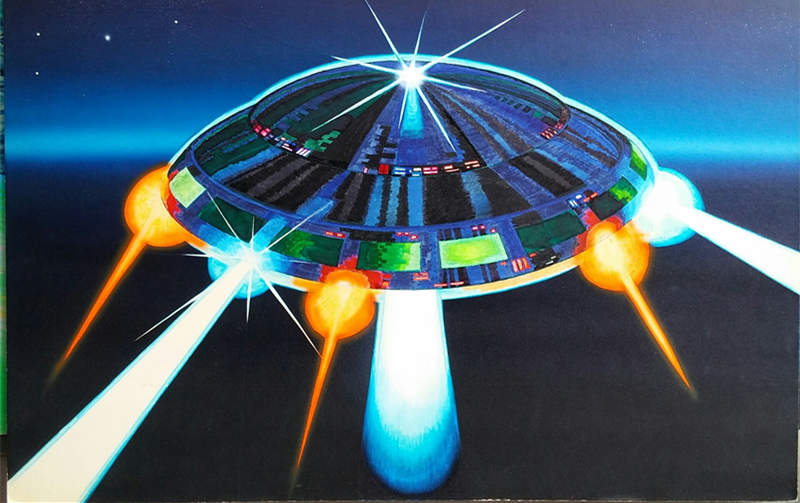
Another document later released reported a very similar object observed over Morocco about 3 or 4 hours later on the same day (local time, 1 or 2 a.m.). This report originated from the U.S. Embassy in Rabat. It was reported that the Moroccan police received multiple reports about an object flying low parallel to the Atlantic coast. The object appeared circular or tubular, making no sound during flight. An unnamed embassy staff member stated that its speed was slow, as if it were about to land. Initially, it was disc-shaped, but as it approached, it elongated.
Ten days later, U.S. Secretary of State Kissinger made a speech indicating the official U.S. stance on unidentified flying objects. He suggested that all UFO sightings could be explained by natural causes and didn’t warrant further investigation. Kissinger mentioned that observers might have seen meteors or satellites. Investigations revealed that the article about the Tehran incident was written in 1978 in the MIJI Quarterly, a journal of the Electronic Security Command in San Antonio, Texas.
Sometimes, in their careers, every pilot may encounter an anomalous situation that cannot be fully explained through logic or subsequent investigation. This article is about one such event reported by the crew of two F-4 Phantoms of the Imperial Iranian Air Force at the end of 1976. Expecting no explanations or additional information: this story might be dismissed, perhaps forgotten, but it will be an interesting, perhaps exhilarating read.
A similar unidentified flying object incident occurred in Tehran in 1978, with electromagnetic interference once again being noted. This report, submitted to the National Security Agency and other U.S. intelligence agencies, relies on the Iranian English newspaper “Tehran Daily.”
The article states that on July 16, a group of people in northern Tehran observed an unidentified flying object. A witness mentioned seeing an object appearing in the sky and hovering directly above him. The witness described it as a “strange burning object,” seemingly circling around southwest Savasi (between Tehran and Hamedan). The witness contacted the radio and control room in Mehrabad, who confirmed the presence of the object but provided no further explanation. The article also noted, “Mehrabad Airport control room supervisor and Lufthansa crew reported equipment malfunctions.”
The article briefly mentions another UFO sighting in April 1978. A local pilot claimed to have captured photographs of a luminous object flying between Avash and Tehran (Avash is located 200 miles southwest of Tehran). He couldn’t release the photos without permission from the Civil Aviation Authority. Radar observations confirmed the situation. “Mehrabad control room management stated that a object about 20 times the size of the largest aircraft could be seen on the radar screen.” An investigation was conducted, but its results were not made public.
END:
As we conclude our exploration into the 1976 Tehran UFO incident, the mysteries that unfolded in the Iranian skies linger as a captivating enigma in the realms of aviation history. The accounts of the F-4 Phantom pilots, the corroborating testimony from ground control, and the perplexing electromagnetic interference all coalesce into a narrative that defies easy explanation. The vivid descriptions of a luminous, unconventional aerial presence, witnessed by seasoned aviators and civilians alike, challenge our understanding of the unknown.
The 1976 Tehran UFO incident, with its strange maneuvers and unexplained phenomena, served as a catalyst for broader implications in the realm of military UFO research. The encounter prompted scrutiny not only within the Iranian military but also drew the attention of global intelligence agencies, including the National Security Agency. The electromagnetic anomalies observed during the incident added a layer of complexity to the exploration of unidentified aerial phenomena (UAP). The incident’s significance extended beyond its immediate timeline, influencing the perspectives and methodologies employed in subsequent military UFO investigations.
This unexplained event compelled military officials and intelligence agencies to reassess their approaches to UFO encounters, sparking a renewed interest in understanding these phenomena. The Tehran incident contributed to a growing awareness within military circles of the potential technological capabilities that surpassed known military equipment. While subsequent investigations may not have yielded definitive answers, the 1976 Tehran UFO incident remains an enduring chapter in the ongoing exploration of the unexplained, leaving an indelible mark on the trajectory of military-related UFO research. As we reflect on this singular event, we are left with a sense of curiosity and a recognition that, in the vast expanse of the skies, there are mysteries that continue to elude our comprehension.
More UFOs and mysterious files, please check out our YouTube channel: MysFiles
The Day After Roswell – UFO secrets and Reverse Engineering
